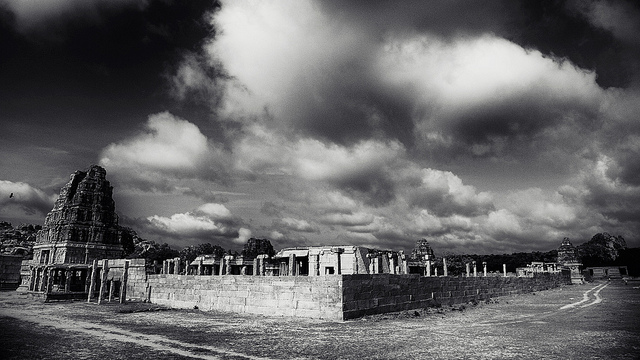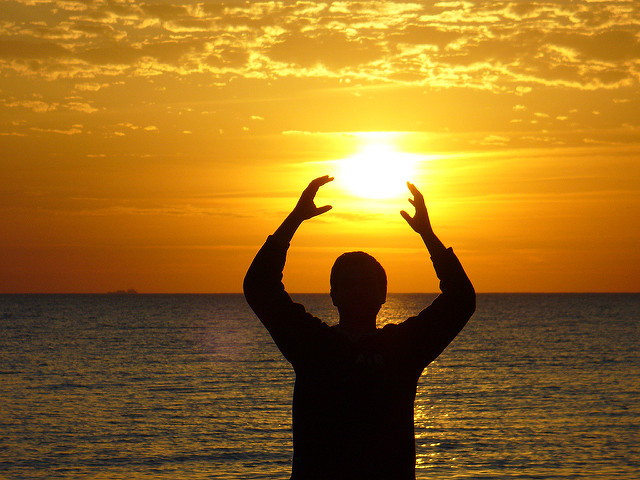Ferocious Deities of Japan
Article By Nataliya Petlevych
 Among the benevolent and peace- and goodness-emanating deities of Japanese Buddhism, one might be surprised to encounter the ferocious and mighty Myōō, the Wisdom Kings. Their appearance is mesmerising: faces filled with astonishing power and determination, clearly visible fangs and bulging eyes, impressive postures of true warriors equipped with different weapons to combat evil. The traditional surrounding mandorla of flames enhances their presence.
Among the benevolent and peace- and goodness-emanating deities of Japanese Buddhism, one might be surprised to encounter the ferocious and mighty Myōō, the Wisdom Kings. Their appearance is mesmerising: faces filled with astonishing power and determination, clearly visible fangs and bulging eyes, impressive postures of true warriors equipped with different weapons to combat evil. The traditional surrounding mandorla of flames enhances their presence.
The impactful depiction of the Myōō reflects the ideas they convey. The Wisdom Kings combine at first sight contradictory powers – they are beneficent and instructive, and at the same time wrathful and frightening. Exoterically speaking, they are protectors of the Dharma and fearsome enemies of evil, who frighten away evil spirits and force lost souls to return to the path of salvation. From the esoteric point of view, as active manifestations of Buddhas and ultimately of the one supreme Buddha, they represent the inner power of the disciple, developed through many challenges and through perseverance in inner work, as well as the power of still unrealized potential. Their wrath portrays the formidable effort it takes to overcome evil, the root of which is ignorance, greed and ill will. They embody a transformation of unruly passions and weaknesses into the constructive steps on the path to enlightenment.
The origins of the Myōō can be found in the Hindu Vidyaraja. The Sanskrit word vidya or the Japanese myō means “mantra”, “esoteric knowledge”, “light”, or “wisdom”. The Sanskrit raja means “king” and correlates with the Japanese о̄. Hence, Myōō are Kings of Wisdom, Illuminating Kings, Kings of Light. They are mostly venerated in Japan’s Tendai and Shingon schools of Buddhism, and are considered to have been brought to Japan from China by the Japanese Buddhist masters Saichō and Kukai in the early 9th century.
The most prominent of all the kings is Fudo, the Immovable One, also known as Acala. He is an envoy of the primordial Buddha Dainichi Nyorai. He sits firmly or stands on a rock symbolising his adamantine and invincible strength. His intense gaze pierces the heart and reaches the deepest corners of a disciple’s inner world. Fudo holds a sword in his right hand and a lasso in his left. Usually, the hilt of his sword is in the form of the vajra, symbolising a thunderbolt. It is the sword of wisdom which cuts through ignorance in its many forms, even the most stubborn. His lasso binds all inner obstacles to awakening, even the most uncontrollable passions. Thus, he represents the active force of self-mastery and the immovable strength of virtue which is attained in the process.
Fudo is also featured in many folk tales, in which he always answers the pleas of those who persistently seek his help. His main temple is in Narita. It was established in 940 to commemorate the victory over a revolt by the powerful regional samurai. It is said that a Shingon priest took the image of Fudo, made by the great master Kukai, to the area of insurrection and performed there a sacred fire ritual for three weeks. On the last day of the ritual, the revolt was subdued. Fudo helped to overcome the forces of chaos and establish peace. His image also grew so heavy that it was impossible to move it back, so a new temple was founded to house the victorious and immovable King of Wisdom.
Fudo empowers and inspires righteous strength. To visualise him is to identify with his powers to vanquish illusions. His “glare stills the wind of karma that turns the wheel of samsara” . In that moment of stillness, it is possible to connect with the virtue of wisdom to master oneself and clear the path to enlightenment.
Image Credits: By Kaikei | Wikimedia Commons | CC0 1.0
The entity posting this article assumes the responsibility that images used in this article have the requisite permissionsImage References
By Kaikei | Wikimedia Commons | CC0 1.0
Permissions required for the publishing of this article have been obtained
Article References
Kukai: Major Works translated, with an account of his life and a study of his thought, by Yoshito S. Hakeda. Columbia University Press. New York. – p.160.




What do you think?